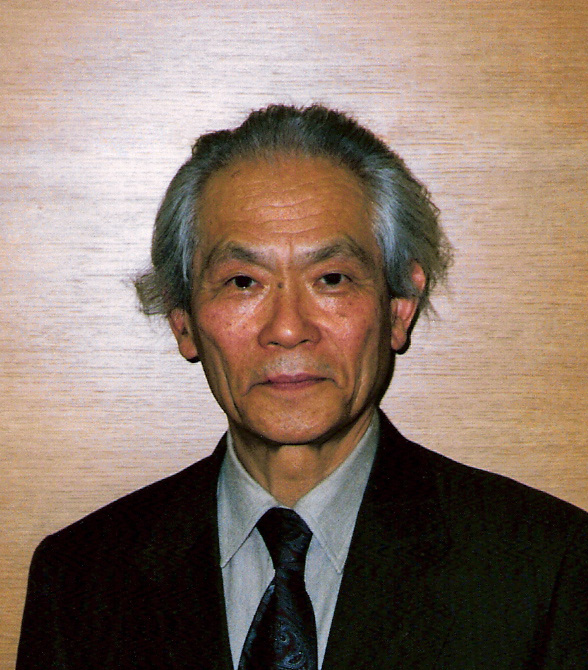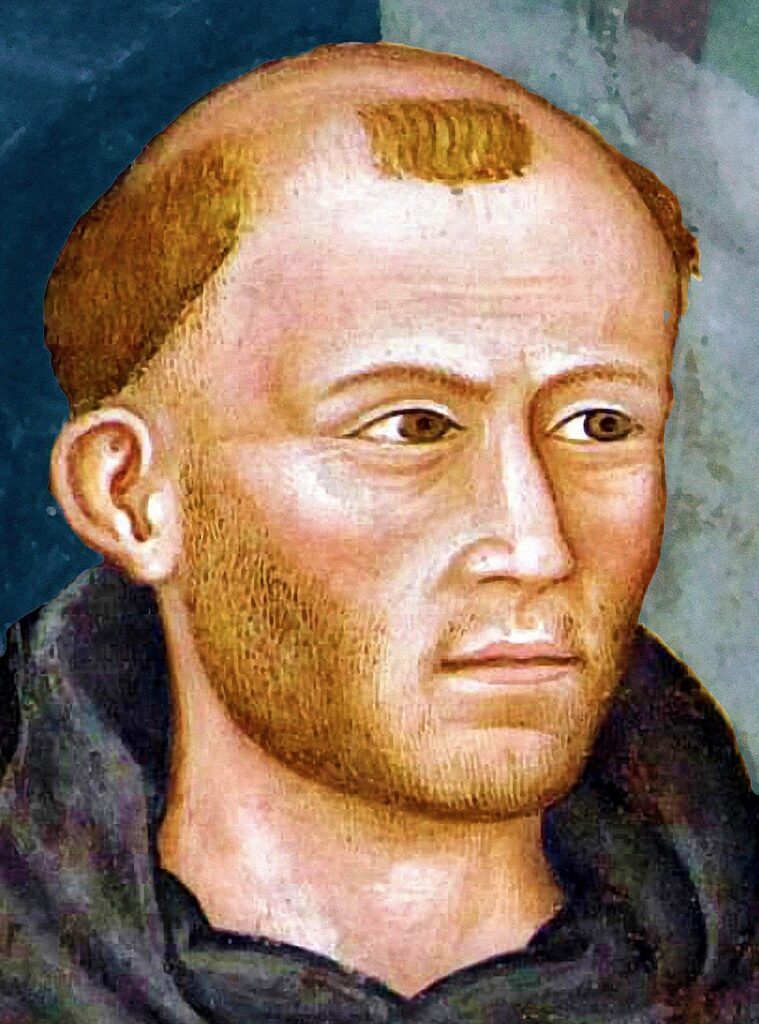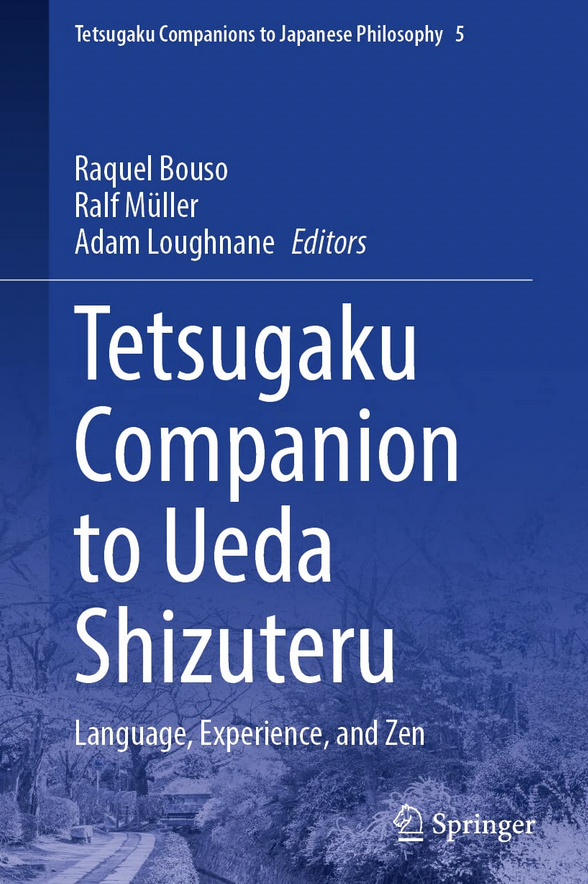
“Ueda’s “lifework has taken place in a space opened by the overlapping of two kinds of “between” – between “religious existence (shukyo-teki jisuzon) and “philosophical thought” (tetsukaku-teki shidaku) on the one hand, and between the intellectual tradition of the West and the spiritual traditions of East Asia on the other (Bret W. Davis).”
Bret Davis, who studied with Ueda for over twelve years in Kyoto, succinctly describes Ueda Shizutaru’s career as a Zen philosopher as follows: “Ueda was the central figure of the third generation of the Kyoto School, and he served as the unofficial School’s unofficial dean for three decades following Nishitani’s death in 1990. Not only was Ueda a scholar of both Meister Eckhart and Zen who played a pivotal role in interreligious dialogue, and not only was he an original philosopher in his own right, he was also a lifelong Zen practitioner who in fact—even though he deferentially declined to parade about his Zen credentials—received the ‘seal of certification’ (inka shomei) as a Rinzai Zen master from Kajitani Sonin Roshi (1914–1995), a former abbot of Shokokuji monastery.”
Ueda was born in 1926, the son of a Shingon Buddhist priest and scholar, who taught him the complex philosophy that Kukai, the founder of the Shingon school of Buddhism, had elaborated, and he very probably initiated him into some of its esoteric practices. Davis notes that memories of these teachings can be found in some of Ueda’s works (especially an essay on “Place and Mandala”). Yet, Ueda opted for a career in philosophy, and in 1945, at the age of nineteen, joined Kyoto University. It is only later, in his late twenties, that Ueda embarked on a Buddhist practice, and it was that of Rinzai Zen, rather than that of Shingon.
Ueda graduated in 1949, and spent another ten years in graduate school at Kyoto University studying philosophy and religion before leaving Japan to study at Marburg University in Germany. Ueda had originally focused on German philosophy and written an undergraduate thesis on Kant. In graduate school, he had proceeded with a study of Hegel, before turning to phenomenology and existentialism, in particular Heidegger and Jaspers. At the same time, however, he had also attended seminars on Buddhist philosophy, especially Madhyamaka, and even started to learn Sanskrit and Tibetan. Davis writes that “he abruptly halted his study of these Buddhist languages around the time he began focusing his attention on Meister Eckhart, which required him to learn Middle High German as well as Latin.”
Even though Ueda’s focus during most of his career has been on Nishida and Heidegger, in addition to Meister Eckhart, Davis says that “the teacher who had the most impact on Ueda was clearly Nishitani,” with whom he studied in graduate school. At the time, Nishitani had just published his first book – Kongen-teki shutaisei no tetsugaku (The Philosophy of Radical Subjectivity, first published in 1940), and a book on German mysticism that focused on Meister Eckhart, Kami to zettai mu (God and Absolute Nothingness, first published in 1948). In 1949, Ueda had also attended the series of lectures given by Nishitani, and later collected in Nihirizumu (Nihilism) translated into English as The Self-Overcoming of Nihilism.” Ueda had first become interested in Zen in his mid-twenties when reading a book by D T Suzuki, but Davis says that, “it was also under Nishitani’s influence that Ueda began to practice Zen.” In fact, Ueda’s first encounter with Zen practice had a lasting impact on him. Davis writes: “Ueda traces his first encounter with the actual practice of Zen meditation (zazen) back to an episode that took place on a trip to Mt. Kōya with his teacher Nishitani. At dusk, he went to Nishitani’s room, and found that the light was off even though the sliding paper door was open. The darkness of the room, he recalls, seemed to stretch out infinitely and transparently, without any obstructions. For a moment, Ueda recalls, ‘my entire self was opened up, without any sound or movement, by the openness of that transparent darkness’. Then, Nishitani, who had in fact been sitting still in meditation, casually stood up and turned on the light. An everyday occurrence for Nishitani, who, according to Ueda, most likely would not have remembered this event at all, the experience left a lasting impact on Ueda, eventually inspiring him to formally take up the practice of Zen as a member of Chishōkai, the lay practitioner group at Shōkokuji to which Nishitani belonged.”

Ueda had been practicing Zen – both seated zazen and koan introspection – with Ōtsu Rekidō Rōshi (1897–1976) for about five years when he went to Germany to study Meister Eckhart in 1959, at the age of thirty-three. His whole stay in Marburg lasted three years – from 1959 to 1962, following which he received his first PhD in 1963. He published it in 1965 under the title Die Gottesgeburt in der Seele und der Durchbruch zur Gottheit. Die mystische Anthropologie Meister Eckharts und ihre Konfrontation mit der Mystik des Zen-Buddhismus (The Birth of God in the Soul and the Breakthrough to the Godhead – “Meister Eckhart’s Mystical Anthropology and Its Confrontation with Zen Buddhism).
Davis writes that “even though he did not initially set out to relate them to one another, Ueda acknowledges that his familiarity with Zen unintentionally yet unmistakably influenced his interpretation of Eckhart.” This came to light after the publication of the dissertation when Ueda was asked by his advisor Ernst Benz to write a text comparing Eckhart with Zen to be added to the dissertation as an “appended chapter.” It is with this text that Ueda was led to switch his focus onto Zen and write, as he said “about Zen from the standpoint of Zen.”
Back in Japan, Ueda first taught German language and literature at Kyoto University, before becoming an assistant professor of “pedagogical anthropology” and full professor in 1972. Davis notes that “as was until recently customary in Japan, he received his second PhD from Kyoto University later in his career, in 1976, with a dissertation on the topic “Studies in Mysticism East and West.” Finally, “in 1977, he was appointed professor of religious studies in the School of Letters at Kyoto University.” He retired from Kyoto University in 1989 but continued to teach as a guest professor at the Rinzai Hanazono University in Kyoto.
Ueda also returned to Germany in 1970-1971 to teach as a guest professor at Marburg University, and travelled on many occasions to Switzerland and Spain to lecture. As a result, several of his works have been published in German, Spanish, and Italian: Zen e filosofia (Italian and Spanish), Wer und was bin ich? Zur Phänomenologie des Selbst im Zen Buddhismus, Die Gottesgeburt in Der Seele Und Der Durchbruch Zur Gottheit: Die Mystische Anthropologie Meister Eckharts Und Ihre Konfrontation Mit Der Mystik Des Zen-Buddhismus (dissertation). None of these have been translated into English, so we must rely on papers and chapters written by scholars in such collections as “Contributions to Dialogue with the Kyoto School,” in Japanese and Continental Philosophy: Conversations with the Kyoto School Ed: Bret W. Davis, Brian Schroeder and Jason M. Wirth, Frontiers of Japanese Philosophy Vol 2 . as well as Tetsugaku Companion to Ueda Shizuteru (2022).

Davis adds that “Ueda also frequently traveled to Switzerland to participate in the Eranos Conferences between 1976 and 1993, and in meetings of the Zürcher Gespräche between 1977 and 2004. In 2003, Ueda was selected to be a member of the prestigious Nihon-gakushi-in (The Japan Academy), and in 2018 he was designated a Bunka kōrō-sha (a culturally meritorious person) by the Japanese government.”
Ueda was married to Ueda Maniko (1930-2017), a renowned translator of German and author in her own right.
“Ueda passed away on June 28, 2019, at the age of 93. On August 25 of that year, a well-attended memorial ceremony was held at Kyoto University, with a slide show and speeches delivered by some of his closest students, associates, and relatives.”
In 2001, Ueda had begun to publish a collected edition of his writings in 11 volumes referred to as Ueda Shizuteru Shu (The Ueda Shizuteru Collection). He added an afterword for each volume, and the topics in these volumes were arranged topically, although, as James Heisig notes, “these topics are much more interwoven in Ueda’s writings than this neat division would imply.”
Davis writes that, in an essay composed in 2004, “Ueda confirms that the three thematic foci that tie together his many decades of research and writing are Meister Eckhart, Zen Buddhism, and Nishida Kitaro.” As we saw, after a thorough training in Western philosophy with a particular focus on German philosophy, and a first period of Zen practice, Ueda dedicated himself to the study of Meister Eckhart sermons. It is on the basis of both this study and his experience of Zen that Ueda developed the notion of “non-mysticism” (hi-shinpi-shugi, Nicht-Mystik) for which he is well-known. Following Nishida’s statement that Zen “Zen has nothing to do with mysticism, as many think,” Ueda showed that Zen went through and “beyond “mysticism. Davis recalls a conversation at his home in 2002, “during which Ueda graciously agreed with [his] suggestion that what he refers to as ‘non-mysticism’ might be better called ‘de-mysticism’ or ‘trans-mysticism’, since what he means is not a straightforward negation of mysticism but rather a path that leads through a radical unio mystica ‘back’ to an even more ‘radical everydayness’ (byojotei), to borrow a phrase from Nishida.”
Davis writes that “one could say that it was in Germany that Ueda began to fully realize the effects on his thought of his own Zen background. It was also there that he began to move this background into the foreground.” Ueda had then been asked to explain Zen to an audience unfamiliar with the East Asian Buddhist tradition.
It was also during his second stay in Germany in 1970-71 that Ueda began to lecture on The Ten Oxherding Pictures on which he eventually published two books.
Then in 1991, Ueda published Nishida Kitaro wo yomu (Reading Nishida Kitaro). Davis asserts here that “more than anyone else, Ueda is responsible for the revival of Nishida studies in Japan, a field that continues to thrive today, and not only in Japan.” Three volumes of his collected works are devoted to his studies of Nishida. Davis says that “according to Ueda, Nishida’s lifelong project was to develop a philosophy that would remain true to the immediately experiential and even ‘contradictory’ facts of concrete reality, rather than impose fabricated ideas or the framework of an abstract logic on that reality. With an abiding ‘respect for the facticity of factual reality (jijitsu no jijitsusei no soncho)’, Ueda says that Nishida’s path of thought was always ‘guided by a twofold concern, namely a direct concern for true reality and a theoretical concern for comprehensive explanation’.”
Davis concludes with Ueda’s own original philosophy, which is also a philosophy “consistently rooted in Zen practice and thought and avowedly influenced by the philosophies of Nishida and Nishitani. In addition to rethinking Nishida’s ‘place of absolute nothingness’ (zettai mu no basho) and Nishitani’s ‘field of emptiness’ (ku no ba) in his own manner using a traditional Mahayana Buddhist term, signifying ‘empty expanse’ or ‘hollow emptiness’ (koku), the three phrases that crystalize Ueda’s philosophy are ‘being-in-the-twofold-world’ (nijū sekai nai sonzai), ‘I, in not being I, am I’ (Ware wa, ware narazu shite, ware nari), and ‘exiting language and exiting into language’ (kotoba kara dete, kotoba ni deru).
As he tread the difficult path between philosophy and Zen that had been opened by Nishida and Nishitani, Ueda was keenly aware that their encounter was “one of mutual confrontation as much as it is one of reciprocal augmentation. Bringing Zen practice and philosophical intellection to bear on one another is not only a matter of mutual enrichment but also entails a great tension and a mutual calling into question. Even while it shares the aim of ‘self-awareness’ (jikaku) with philosophy, Zen’s suspicion of a merely intellectual pursuit of this aim is well-known. Ueda does not evade, but rather draws our attention to this disparity between Zen practice and philosophical intellection (Davis).
In Ueda’s own words: “It must be said that there is a fundamental gap between Eastern practice (gyo), especially the Zen of non-thinking (hishiryo) and philosophy as an academic discipline of reflection (hansei go gaku) that arose and developed in the West.” Both Nishida and Nishitani had “cast [themselves] into that gap.” Nishitani, however, had also stated that the “problem of Zen and philosophy … remains even now to be settled.”
In Ueda’s view, Davis writes, “the meeting of Zen and philosophy” could be compared “to the initial clashing encounter and eventual dialogical cooperation between the Greek reason and Judeo-Christian faith, the interweaving of which formed the backbone of the Western tradition.”
Sources:
Bret W. Davis – “The Legacy of Ueda Shizuteru: A Zen Life of Dialogue in a Twofold World”
James W. Heisig – “Introduction to Ueda’s Works: Approaching the Ueda Shizuteru Collection” in Tetsugaku Companion to Ueda Shizuteru, Ed. Ralf Müller, Raquel Bouso and Adam Loughnane
Bret W. Davis – “The Contours of Ueda Shizuteru’s Philosophy of Zen” in Tetsugaku Companion to Ueda Shizuteru
